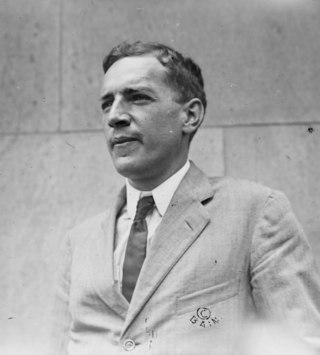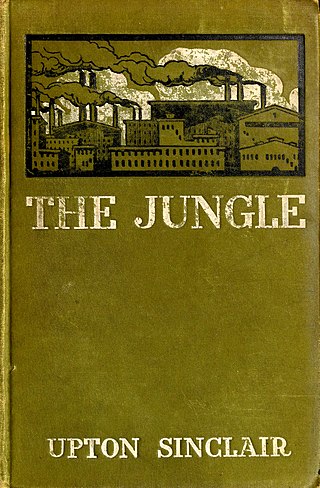Related Research Articles

Gonzo journalism is a style of journalism that is written without claims of objectivity, often including the reporter as part of the story using a first-person narrative. The word "gonzo" is believed to have been first used in 1970 to describe an article about the Kentucky Derby by Hunter S. Thompson, who popularized the style. It is an energetic first-person participatory writing style in which the author is a protagonist, and it draws its power from a combination of social critique and self-satire. It has since been applied to other subjective artistic endeavors.

Horror is a genre of fiction that is intended to disturb, frighten or scare. Horror is often divided into the sub-genres of psychological horror and supernatural horror, which are in the realm of speculative fiction. Literary historian J. A. Cuddon, in 1984, defined the horror story as "a piece of fiction in prose of variable length... which shocks, or even frightens the reader, or perhaps induces a feeling of repulsion or loathing". Horror intends to create an eerie and frightening atmosphere for the reader. Often the central menace of a work of horror fiction can be interpreted as a metaphor for larger fears of a society.
Yellow journalism and yellow press are American terms for journalism and associated newspapers that present little or no legitimate, well-researched news while instead using eye-catching headlines for increased sales. Techniques may include exaggerations of news events, scandal-mongering, or sensationalism. By extension, the term yellow journalism is used today as a pejorative to decry any journalism that treats news in an unprofessional or unethical fashion.
In English writing, quotation marks or inverted commas, also known informally as quotes, talking marks, speech marks, quote marks, quotemarks or speechmarks, are punctuation marks placed on either side of a word or phrase in order to identify it as a quotation, direct speech or a literal title or name. Quotation marks may be used to indicate that the meaning of the word or phrase they surround should be taken to be different from that typically associated with it, and are often used in this way to express irony. They are also sometimes used to emphasise a word or phrase, although this is usually considered incorrect.
A sound bite or soundbite is a short clip of speech or music extracted from a longer piece of audio, often used to promote or exemplify the full length piece. In the context of journalism, a sound bite is characterized by a short phrase or sentence that captures the essence of what the speaker was trying to say, and is used to summarize information and entice the reader or viewer. The term was coined by the U.S. media in the 1970s. Since then, politicians have increasingly employed sound bites to summarize their positions.

Upton Beall Sinclair Jr. was an American writer, muckraker, political activist and the 1934 Democratic Party nominee for governor of California who wrote nearly 100 books and other works in several genres. Sinclair's work was well known and popular in the first half of the 20th century, and he won the Pulitzer Prize for Fiction in 1943.

The Jungle is a fictional novel by American muckraker author Upton Sinclair, known for his efforts to expose corruption in government and business in the early 20th century. In 1904 Sinclair spent seven weeks gathering information while working incognito in the meatpacking plants of the Chicago stockyards for the socialist newspaper Appeal to Reason, which published the novel in serial form in 1905. The novel was later published in book format by Doubleday in 1906.
News style, journalistic style, or news-writing style is the prose style used for news reporting in media such as newspapers, radio and television.

The muckrakers were reform-minded journalists, writers, and photographers in the Progressive Era in the United States (1890s–1920s) who claimed to expose corruption and wrongdoing in established institutions, often through sensationalist publications. The modern term generally references investigative journalism or watchdog journalism; investigative journalists in the US are occasionally called "muckrakers" informally.

Copy editing is the process of revising written material (copy) to improve readability and fitness, as well as ensuring that a text is free of grammatical and factual errors. The Chicago Manual of Style states that manuscript editing encompasses "simple mechanical corrections through sentence-level interventions to substantial remedial work on literary style and clarity, disorganized passages, baggy prose, muddled tables and figures, and the like ". In the context of print publication, copy editing is done before typesetting and again before proofreading. Outside traditional book and journal publishing, the term "copy editing" is used more broadly, and is sometimes referred to as proofreading; the term sometimes encompasses additional tasks.

Mark Bowden is an American journalist and writer. He is a national correspondent for The Atlantic. He is best known for his book Black Hawk Down: A Story of Modern War (1999) about the 1993 U.S. military raid in Mogadishu, Somalia. It was adapted as a motion picture of the same name that received two Academy Awards.
Scare quotes are quotation marks that writers place around a word or phrase to signal that they are using it in an ironic, referential, or otherwise non-standard sense. Scare quotes may indicate that the author is using someone else's term, similar to preceding a phrase with the expression "so-called"; they may imply skepticism or disagreement, belief that the words are misused, or that the writer intends a meaning opposite to the words enclosed in quotes. Whether quotation marks are considered scare quotes depends on context because scare quotes are not visually different from actual quotations. The use of scare quotes is sometimes discouraged in formal or academic writing.
Myrna Blyth is an American editor and writer. She currently works at AARP Media and has authored four books, including the nonfiction book Spin Sisters.
Clem Whitaker and Leone Baxter were a husband-and-wife team that started Campaigns, Inc., the first political consulting firm in the United States. Based in California, the firm worked on a variety of political issues, mostly for Republican Party candidates. They both supported conservative ideals.
Greg Mitchell is an American author and journalist. He has written twelve non-fiction books on United States politics and history of the 20th and 21st centuries. He has also written and directed three film documentaries.

The Goose-step: A Study of American Education is a book, published in 1923, by the American novelist and muckraking journalist Upton Sinclair. It is an investigation into the consequences of plutocratic capitalist control of American colleges and universities. Sinclair writes, “Our educational system is not a public service, but an instrument of special privilege; its purpose is not to further the welfare of mankind, but merely to keep America capitalist." (p. 18)

The Profits of Religion: An Essay in Economic Interpretation is a nonfiction book, first published in 1917, by the American novelist and muck-raking journalist Upton Sinclair. It is a snapshot of the religious movements in the U.S. before its entry into World War I.

Investigate was a current affairs magazine published in New Zealand. It had a conservative Christian editorial standpoint and published a number of controversial articles. Many of the more notable articles were critical of policies and members of the centre-left Fifth Labour Government of New Zealand which governed from December 1999 until November 2008. It was edited by Ian Wishart. New New Zealand First MP Richard Prosser used to write a column called Eyes Right in the magazine, and his book Uncommon Dissent has been heavily promoted by the group. In June 2015, Investigate ceased print publication and announced that it would become a solely online publication; citing declining circulation and sales at supermarkets.

The Brass Check is a muckraking exposé of American journalism by Upton Sinclair published in 1919. It focuses mainly on newspapers and the Associated Press wire service, along with a few magazines. Other critiques of the press had appeared, but Sinclair reached a wider audience with his personal fame and lively, provocative writing style. Among those critiqued was William Randolph Hearst, who made routine use of yellow journalism in his widespread newspaper and magazine business.
This glossary of journalism is a list of definitions of terms and concepts used in journalism, its sub-disciplines, and related fields, including news reporting, publishing, broadcast journalism, and various types of journalistic media.
References
- ↑ Kaplan, Alice Yeager (1986). Reproductions of Banality: Fascism, Literature, and French Intellectual Life. Theory and History of Literature. Vol. 36. University of Minnesota Press. ISBN 9781452901497 . Retrieved 25 January 2017.
- 1 2 McWilliams, Carey (1946), Southern California: An Island on the Land, p. 298, ISBN 9780879050078 , retrieved 25 January 2017
- 1 2 Harries, Martin (2000). Scare Quotes from Shakespeare: Marx, Keynes, and the Language of Reenchantment. Stanford University Press. p. 6. ISBN 9780804736213 . Retrieved 25 January 2017.
- 1 2 Sinclair, Upton (1928). The Brass Check: A Study of American Journalism. University of Illinois Press. pp. 91, 214, 285. ISBN 9780252071102.
- ↑ Craigie, W. A.; Onions, C. T., eds. (1933). The Oxford English Dictionary: A New English Dictionary on Historical Principles. Oxford: Clarendon Press.
- ↑ Pauly, Daniel; Froese, Rainer, eds. (2017). "scare line". FishBase . Leibniz Institute of Marine Sciences. Retrieved 25 January 2017.
- ↑ Sinclair, Upton (1928). The Brass Check. p. 419. ISBN 9780252071102.
- 1 2 3 4 5 6 7 8 Blyth, Myrna (2007). Spin Sisters: How the Women of the Media Sell Unhappiness and Liberalism to the Women of America. Macmillan. pp. 116, 120, 122–127, 136–137, 140, 299. ISBN 9781429970952 . Retrieved 25 January 2017. The block quotations are from pp. 123–124, 125, and 127, respectively.